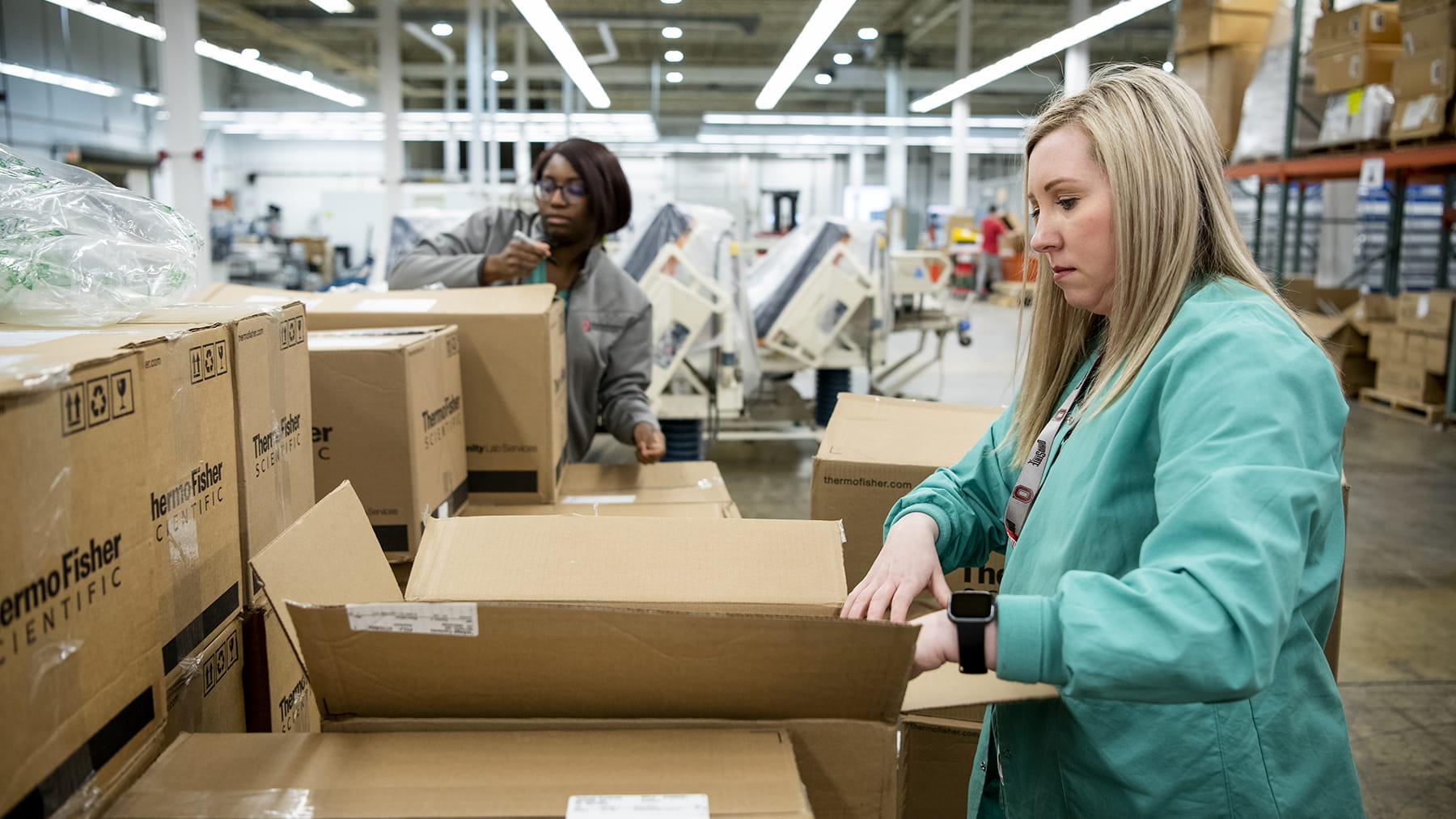What COVID-19 has changed for hospital supply chains

The threat of COVID-19 immediately changed how hospitals like The Ohio State University Wexner Medical Center looked at their equipment inventories—especially for personal protective equipment (PPE) like face masks and isolation gowns.
The unique circumstances may forever alter the way some supply chains operate.
Challenges COVID-19 brought to hospitals
Because the coronavirus that causes COVID-19 is spread primarily through droplets in the air, PPE is critical to protect medical staff and other patients from contracting the respiratory disease. And as medical facilities all over the world required more PPE, equipment vendors were pushed well beyond their normal capacity.
That forced hospitals to look at the sources for their equipment supply. Many took for granted that products manufactured overseas would always be available, and hospital supply chain leaders like myself have since turned a more critical eye toward the entire value-chain.
Now and in the future, prioritizing local sourcing—both distributing and manufacturing—is important to simplify shipping routes and ensure that this vital equipment will be available in a crisis.
How Ohio State prepared
At the Ohio State Wexner Medical Center, we quickly rallied our resources to get that valuable PPE to the areas that most needed it. We were able to redistribute PPE from our seven health sciences colleges, our Athletics Department and other university areas that use PPE less often during state stay-at-home orders.
We collaborate multiple times a week with other Ohio health systems to make sure we all have necessary equipment and to help solve problems that arise. For example, with our research and lab leadership here at the medical center, in-house we’ve produced the liquid required for COVID-19 test kits and took a lead role in developing 3D-printed swabs. We’re leading Ohio in sharing these test kits with other hospitals in need.
In fact, we’ve shared the recipe for the test kit liquid and the software to produce the swab with locales across the country (including hard-hit New York City) and around the world so that others can produce their own kits.
We also quickly created a centralized warehouse for all critical inventory, which made visibility, accountability and security much more efficient. Within that warehouse, we set up a drive-up donations center for anyone to donate sealed, never-used masks, gloves and other equipment.
How donations help and how they’re made safe
Since mid-March, Ohio State has received medical equipment donations from every corner of Columbus and beyond. They come from large corporations and even from individuals who ride up on bicycles to drop off a few boxes of masks.
The donations represent a very small fraction of the PPE used daily at our hospitals, but they’re also much appreciated.
When donations arrive, they’re isolated from our normal supply until our epidemiology experts can examine them and ensure that they’re safe to use. Some donations of gloves or masks aren’t designed for medical use, but in those cases, we reroute them to other areas where they can be used, such as in security or food service.
Medical supply in the future
At Ohio State, the COVID-19 pandemic introduced a new, better process for tracking and storing all medical equipment. Supply Chain workers also developed a strict criteria list to vet new vendors who could supply equipment when regular vendors simply couldn’t keep up with demand. These are the smaller, practical changes that Ohio State and other health systems likely will continue to use in the future.
On a larger scale, local sourcing will have to be the focus. Hospitals will need to take a more holistic, strategic approach to supply chain management that closely tracks inventory and forms stronger relationships with manufacturers and distributors, whether those vendors are nearby or offshore.
You may have noticed consumption patterns change in your own home—your pantry inventory may look different, for example, if you’ve visited the grocery store and eaten at restaurants less often. COVID-19 has definitely changed consumption patterns in hospitals too, as standards of care change and we stay abreast of new guidelines and recommendations. These are the things that shape the focus of supply chains and allow us to be better prepared in the future.
Hal Mueller is chief supply chain officer at The Ohio State University Wexner Medical Center.

